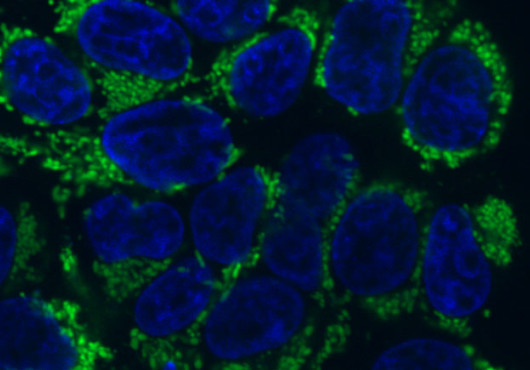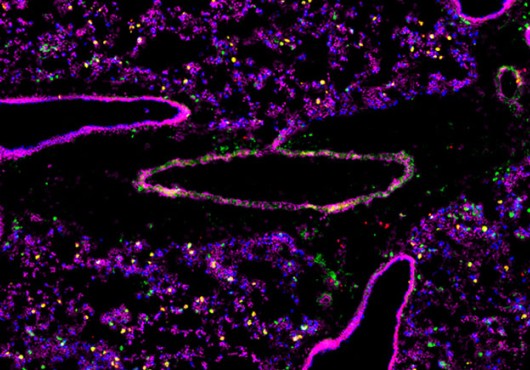
“Being so many different sizes in a day is very confusing,” said Alice to the Caterpillar after shrinking and growing to alarming heights in Lewis Carroll’s Alice’s Adventures in Wonderland.
Harvard Medical School geneticist Max Heiman and his then-graduate student Ian McLachlan were reminded of poor Alice as they studied how nerve cells settle into the right size in the body.
Neurons—including the branching ends that receive electrical signals, called dendrites—need to be the correct length to carry out their functions. McLachlan and Heiman focused on a neuron called URX that helps Caenorhabditis elegans worms sense oxygen.
The researchers were looking for genetic mutations that leave developing worms with dendrites that are too short. To their surprise, they also found mutations that make dendrites too long.
“You would expect there would be factors that normally help neurons grow, but you wouldn’t necessarily think there are factors that are supposed to do the opposite,” said Heiman, assistant professor of genetics and of pediatrics at HMS and Boston Children’s Hospital.
Not only did the mutant dendrites grow instead of shrink, they did so at an unexpected time.
The URX neuron developed normally in C. elegans embryos, stayed the proper length during the worm equivalent of childhood, and then started growing disproportionately longer as the worms passed through “adolescence” into adulthood. In some cases, the dendrites reached up to one and a half times their usual length, Heiman said.
“You initially have the right size, but something goes wrong and you don’t keep it; you have a maintenance problem,” he said.
The findings, published in PLoS Genetics, counter scientists’ previous understanding that neuron length is established during development and remains untouched until late adulthood, when the cells may begin to degenerate. Instead, the authors suggest, proper neuron length must be actively maintained throughout an organism’s life.
“We’d never thought about how a neuron has to keep the right length after it’s already grown,” said Heiman. “Our work suggests there are genetic programs for maintenance as well as for development.
“It’s not that you set up dendrite size early in development and then you’re done. You don’t make a house and just live in it from then on. It’s actively being remodeled.”
To find out whether overgrowth affects URX’s function, Heiman’s group teamed up with Isabel Beets and Mario de Bono at the Medical Research Council Laboratory of Molecular Biology in Cambridge, England. Experiments indicated that the worms’ ability to sense oxygen didn’t change.
A question of compartments
The work could illuminate areas of human development and disease by revealing more about how organisms regulate the size of the compartments that make up dendrites.
The oxygen-sensing molecules in URX neurons are all clustered in “this little compartment at the very end of the dendrite,” said Heiman. The extra growth appeared to include only that compartment.
The human nervous system has similar compartments that undergo dynamic changes throughout the lifespan.
“Most signals are received in compartments called dendritic spines,” said Heiman. “These are known to change in size during learning and memory and also in developmental and degenerative diseases.”





